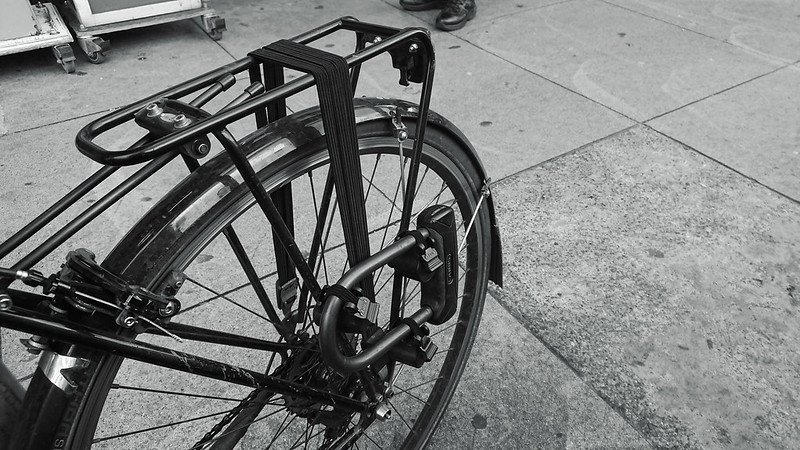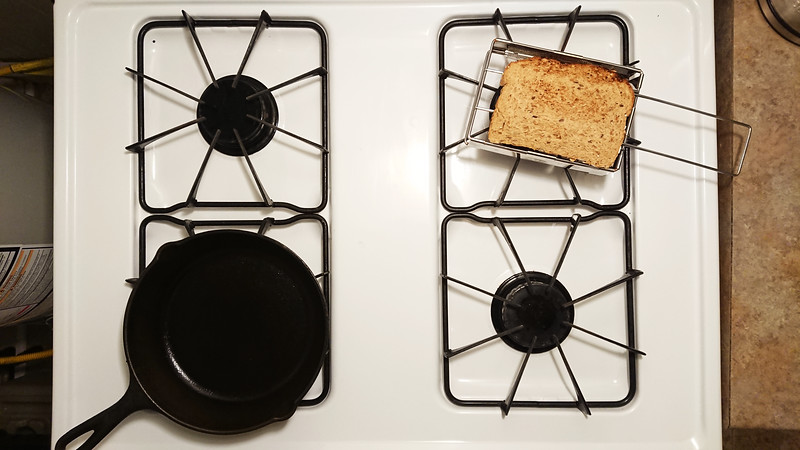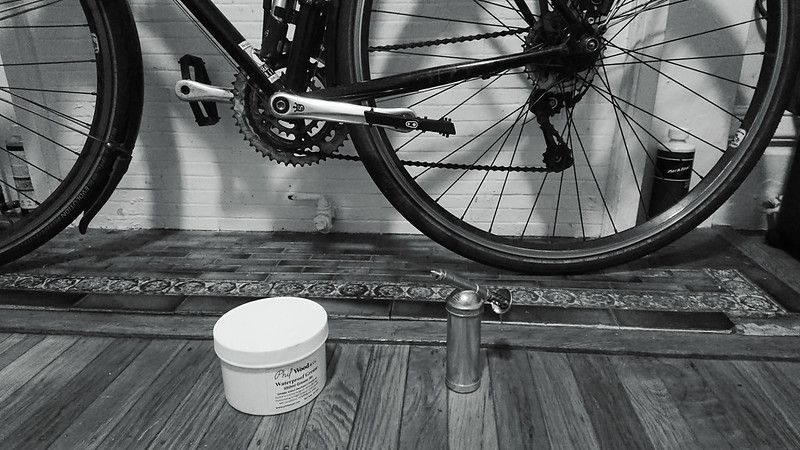For the majority of my time on a bike I’ve carried a U-lock in my bag. I’d rather have the weight on the bike than on my back, but I’d never found a way to accomplish this without unacceptable compromise. Mounting the lock inside the triangle interferes with throwing the bike on my shoulder when going up or down stairs. Bungee cords on a rear rack can hold the lock securely, but don’t prevent it from rattling around, and I place a very high value on the ability to move silently.
A little over a year ago I solved this problem by purchasing the ABUS Ugh Bracket. The Ugh is a three-piece bracket that mounts to the arms of any rear rack. Each component has a groove which holds the U-Lock arm and a small elastic band with a toggle which locks the arm in place. The bracket is clearly meant for large sized U-Locks, but I was able to make it work with my compact ABUS GRANIT Plus 640 and Tubus Vega rack by mounting at the bottom of the rack where the arms are closest together.

The Ugh holds the lock securely and silently. It gets the weight off of my back and ensures that the lock is always on my bike. It makes accessing the lock quick and easy. I would like to see the elastic strap replaced with some material with a longer life, but other than that I have been very happy with the bracket. I think it’s one of the better options out there for carrying a U-Lock.
When the bracket is installed, a pannier cannot be mounted to the same side of the rack. I use panniers when touring, but I don’t tour with a U-Lock, so this isn’t something I care about most days. It only takes a couple minutes to uninstall, but it is annoying to do and another barrier to heading out on a multi-day trip.
When I purchased the Ugh I couldn’t find anybody selling it in the US. I had to pay for it in Euros and ship it from Germany, which made it an expensive experiment. It is now carried by Lockitt, though at $32.00 it remains a pricey item. I’ve been happy enough with mine that I’d buy it again, but it is definitely pricier than throwing a couple Twofish Blocks on your bike.



